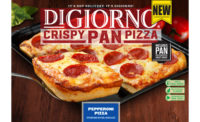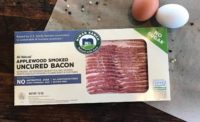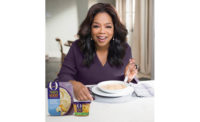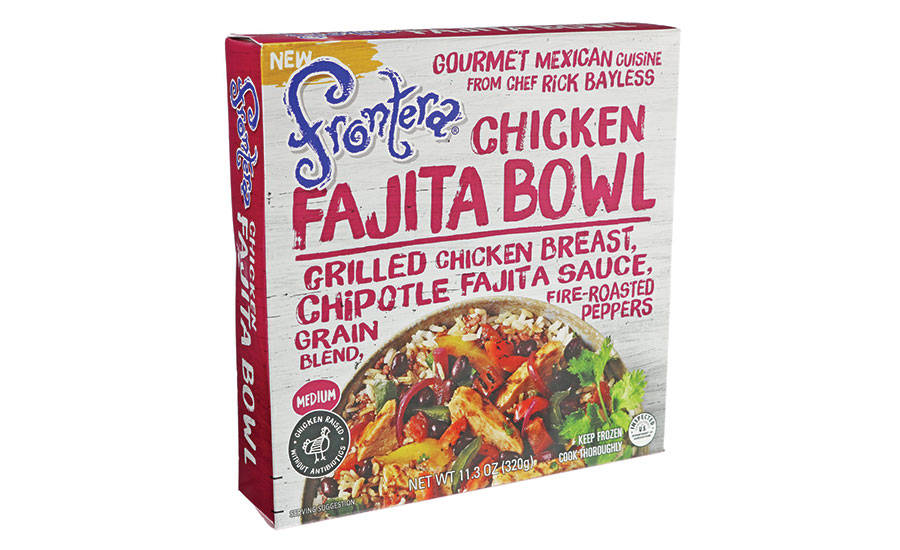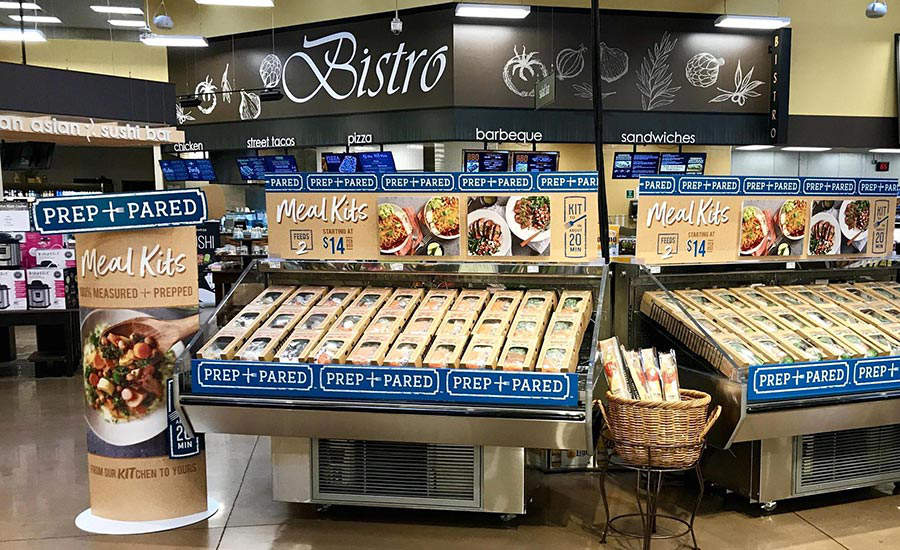Retail State of the Industry | Meals & Entrees
2018 Meal Trends: Familiar, Foreign, Fast, Fresh
Meals need clean label appeal, taste adventure and convenience to vie for consumer spending




Of all the considerations surrounding prepared meals—there’s only one that hasn’t changed: it’s the question of “why.” Of course the answer is that people need to eat.
Yet packaged food product developers now face a Rubik’s cube puzzle—where all the other considerations constantly shift—and extend well beyond traditional supermarket walls. What are consumers choosing to eat? When and where do consumers search for meal solutions? Who’s preparing that meal? How do meal solutions get to the consumer?
It seems every food dollar is up for grabs. And in a low- to no-growth market, today’s competition is fierce, according to NPD’s annual Eating Patterns in America report.
“Consumer eating attitudes and behaviors are evolving in ways that transform long-standing consumption patterns. Shifting demographics, changing meal composition, more fresh foods, and new attitudes on beverages all create challenges for growth,” says David Portalatin, NPD vice president, industry analyst and author of Eating Patterns in America. “Today’s macro environment isn’t generating organic growth for the food and foodservice sectors so we’re dealing with a one-percent world.”
For the record, data from IRI, a Chicago-based market research firm, show overall flat results in the largest retail frozen category of dinners and entrées (non-breakfast). Total category dollar sales rang in at just more than $9 billion (up 1.4%) while unit sales slipped 1.64% to 2.9 billion during a 52-week tracking period ended December 3, 2017. IRI InfoScan data reflect total US multi-outlet locations including grocery, drug, mass market, convenience, military and select club and dollar retailers.
Within the dinners and entrees category, the only niche generating growth involved multi-serve frozen dinners/entrees, which posted a 3.69% dollar sales gain to just more than $2 billion. The category saw item sales rise by an accompanying 1.29% rate to 304 million units. Elsewhere in the freezercase, IRI data show both frozen hand-held breakfast entrees (a $1.6 billion category) and frozen breakfast entrees (a $665.7 million category) also posted sales and unit gains.
Several related refrigerated categories posted sales gains—no doubt appealing to more “fresh” appeal. The same IRI InfoScan data show sales and unit increases for both refrigerated dinners/entrees and refrigerated breakfast entrees. The larger dinner/entrée segment posted a 6.48% dollar increase to $867.2 million with a 9.05% unit sales increase. Meanwhile, the smaller breakfast entrée category posted a 20.56% dollar sales boost to $490 million with a 14.37% rise in unit sales.
Interestingly, IRI data also show nice gains for the refrigerated lunch combinations category (involving items such as meat, cheese, crackers and dessert). These items—now increasingly marketed for their protein content and on-the-go snacking appeal—delivered a 14.72% boost in sales to $2.3 billion with an accompanying 12.95% increase in units sold.
Let’s Go Bowling
How do food companies and product developers handle category shifts and appeal to consumers? The formula for success involves a mixture of the familiar—meaning clean label ingredient simplicity—mixed with foreign taste adventure, on-trend culinary appeal and a fast and/or fresh convenient format.
So if consumers aren’t dining out—why not bring restaurant tastes and trends to them? Several processors seemingly took a page right out of 2017 restaurant trends—and introduced prepared entrées in a bowl format. Likewise, many product developers embraced authentic and new global flavors to deliver at-home restaurant adventure.
Corporate chefs and product developers at Nestlé Foods Division, Solon, Ohio, last year introduced an eight-item line of Stouffer’s Kit Kitchen Bowl entrees. Each promises 20g+ of protein and varieties include Pork Carnitas, Steak Fajita, and Chicken with Cashews (also has brown rice and quinoa).
Similarly, Conagra Brands introduced four Healthy Choice Power Bowls showcasing foreign flavors. Varieties include Adobo Chicken, Korean-Inspired Beef, Cuban-Inspired Pork and a Chicken Sausage & Barley. Each bowl also delivers more than 15g of protein, and 6g to 8g of fiber.
Consumers also associate restaurants with exotic ethnic dishes, new spices and seasonings. For their part, frozen entrée processors also are trying to please these adventurous appetites.
Inspired by their travels to top restaurants and culinary hot spots, Nestlé said its chefs crafted new dishes and reinvented classics for Lean Cuisine. Two new Asian entrees are Garlic Sesame Noodles with Beef and a limited-edition Mango Chicken with Coconut Rice. Meanwhile, developers added natural white meat chicken to recast a Sesame Chicken and Chicken Fried Rice (gluten free).
As IRI data suggest, there’s growing competition for every meal dollar from every spot within a grocery store—including all refrigerated perimeter departments. Moreover, these fresh items also address similar meal and taste trends.
Conagra also has emphasized new ethnic flavors—particularly with a modern Mexican flair. After buying Chef Rick Bayless’ Frontera Foods business in late 2016, Conagra came back last summer with four new frozen Frontera Foods bowl entrées and five skillet meals. Both lines feature Chicken Fajita, Barbacoa Taco and Veggie Taco offerings. There’s also a Tinga Taco bowl and Carnitas Taco and Chicken Taco skillet meals.
EVOL Foods, part of Pinnacle Foods’ Boulder Brands portfolio, expanded its single-serve frozen entrée line with four international selections. They include Hawaiian Style Grilled Chicken, Ginger Soy Udon Noodles, Korean BBQ Style Chicken and Shawarma Style Chicken.
Bellisio Foods, Minneapolis, took an international flavor approach in its new 12-item frozen single-serve line called SO RIGHT. Varieties include Sriracha Chicken Mac & Cheese, Szechuan Style Kung Pao Chicken, Chicken Burrito Bowl and Chorizo & Potatoes with Cheesy Chipotle Sauce. Entrees feature 100% natural white meat chicken (minimally processed with no artificial ingredients), roasted vegetables, whole grains, and brown rice.
Stealth Health, Simplicity
Many more new products tout other types of feature formulations including those with enhanced nutritional benefits and simple clean label attributes.
Bellisio added six more frozen single-serve items to its EatingWell line (licensed from publisher Meredith Corp.). Officials say each has one cup of vegetables; 13 or more grams of protein; chicken, beef or pork raised without antibiotics; and whole grains.
Last year also saw Stouffer’s begin initial limited distribution of Stouffer’s Simply Crafted, which are two organic, multi-serve entrees (33oz, 35oz) that are preservative- and GMO-free. Initial varieties are White Cheddar Macaroni & Cheese and Spicy Pomodoro Penne.
Conagra also refreshed its premium line with six new Marie Callender’s Delights dinners that feature what it called “smart ingredient swaps.” In a nod to consumer preferences for lighter, clean label offerings, product developers used lean proteins, more contemporary and colorful vegetables and sauces—while they eliminated any artificial preservatives, flavors or colors.
One category newcomer is Primitive Feast, Los Angeles. The company’s five initial product offerings include Chicken Masala, Chicken in Bell Pepper Sauce, Grass-fed Beef Chili, Grass-fed Beef Meatballs in Marinara Sauce, and Chili Verde with Chicken. Primitive Feast entrees use grass-fed/grass finished beef and organic chicken breast, are free of gluten, milk, and soy, and contain only olive oil or other healthy fats. Each single-serving package ranges between 240-440 calories apiece and provides between 27g to 38g of protein per serving.
Also taking an allergy-friendly approach has been Caesar’s Kitchen, Blackwood, N.J., which launched seven certified gluten-free frozen gourmet pasta meals. Varieties include Vegetable Lasagna, Cheese Lasagna, Italian Style Stuffed Shells, Cheese Manicotti and Chicken Lasagna. All meals are vegetarian except for the Chicken Lasagna.
“This expansion offers busy families seeking a gluten-free, hot, delicious meal for work or home in a matter of minutes, start to finish,” noted Michelle Hennessy, sales and marketing manager. “We’ve given shoppers more better-for-you meals in a myriad of flavors.”
Rise and Dine
Still more companies blend health with breakfast appeal. One of those has been Good Food Made Simple. Last summer saw this Wellesley, Mass., company introduce new frozen entrees, including four new USDA Organic burritos, three vegetarian breakfast burritos and two breakfast enchiladas bowls. All are free of artificial ingredients and feature cage-free eggs, antibiotic-free meats, real cheese and organic and non-GMO ingredients.
Organic food pioneer Amy’s Kitchen, Petaluma, Calif., also introduced two new Breakfast Bakes: Country Breakfast and Mexican Breakfast. Both bowl-style entrees feature organic, non-GMO ingredients and are gluten free.
Fresh Meal Appeal
As IRI data suggest, there’s growing competition for every meal dollar from every spot within a grocery store—including all refrigerated perimeter departments. Moreover, these fresh items also address similar meal and taste trends.
For example, among those also targeting breakfast is Tyson Foods, which launched refrigerated, microwaveable frozen Jimmy Dean Simple Scrambles. Each single-serve cup includes two real, pre-beaten liquid eggs; fully cooked and seasoned Jimmy Dean meats and shredded sharp cheddar cheese.
Consumers cook the eggs for 45 seconds, stir in the meat and cheese, heat for an additional 30 to 40 seconds and eat. Varieties include Sausage, Meat Lovers and Bacon, each with at least 22g protein. These portable breakfasts come in 5.35oz cups at a suggested retail of $2.99.
Want fresh ethnic adventure? Café Spice, New Windsor, N.Y., last year introduced four refrigerated 16oz microwaveable refrigerated meals inspired by classic Indian homestyle fare: Butter Chicken Meatballs, Coconut Chicken Curry and two vegan options – Bombay Dal Palak and Aloo Gobhi Curry.
One interesting debut involved The Kroger Company’s Prep+Pared Meal Kit line. The meals-for-two line debuted last fall in the Ralph’s division (southern California), as well as Kroger stores in Cincinnati and Louisville, Ky. Joining the program next were Kroger-owned stores in four additional divisional markets identified as: Central, Columbus, Fry’s and Nashville.
Cooking time for each meal kit is about 20 minutes. Prep+Pared Meal Kits feed two adults and range in price from $14 to $20, and there is no required subscription.
Officials say Kroger’s culinary innovation team developed several meal recipes including Bacon and Honey Mustard Glazed Chicken with Broccolini Radish and Wheatberry; Shrimp Scampi with Lemon Garlic Fettuccini; and Carne Asada with Fajita Vegetables and Refried Black Beans.
Elsewhere, Raley’s, West Sacramento, Calif., expanded its Ready-To-Go meal options (first launched in 2010) with new sizes, flavors and packaging. Officials say the new and improved Ready-To-Go program includes 32 different meals, all made with fresh, premium ingredients that can be found in the fresh deli department in grab-and-go displays.
Other food companies hope consumers learn to look for meal solutions everywhere—including the produce aisle. Ready Pac Foods, Irwindale, Calif., ended 2017 with the launch of Fresh Prep’d, a new line of prepared soups and wrap kits.
Fresh Prep’d Wrap Kits feature high-quality ingredients, bold sauces and vegetables, many inspired by the company’s most popular Bistro Bowl varieties. Consumers assemble their wrap right before mealtime allowing for a fully customizable experience with a fresh, never soggy, tortilla and crisp, crunchy vegetables, not possible previously with pre-prepared wraps. Four of varieties include roasted or grilled chicken. Offerings are Bacon & Garlic Caesar, Buffalo-Style Ranch, Southwest Style Ranch, Thai-Style Peanut and Roasted Vegetable & Feta (vegetarian).
Originally appeared in the March, 2018 issue of Prepared Foods as Familiar, Foreign, Fast, Fresh.
Looking for a reprint of this article?
From high-res PDFs to custom plaques, order your copy today!




